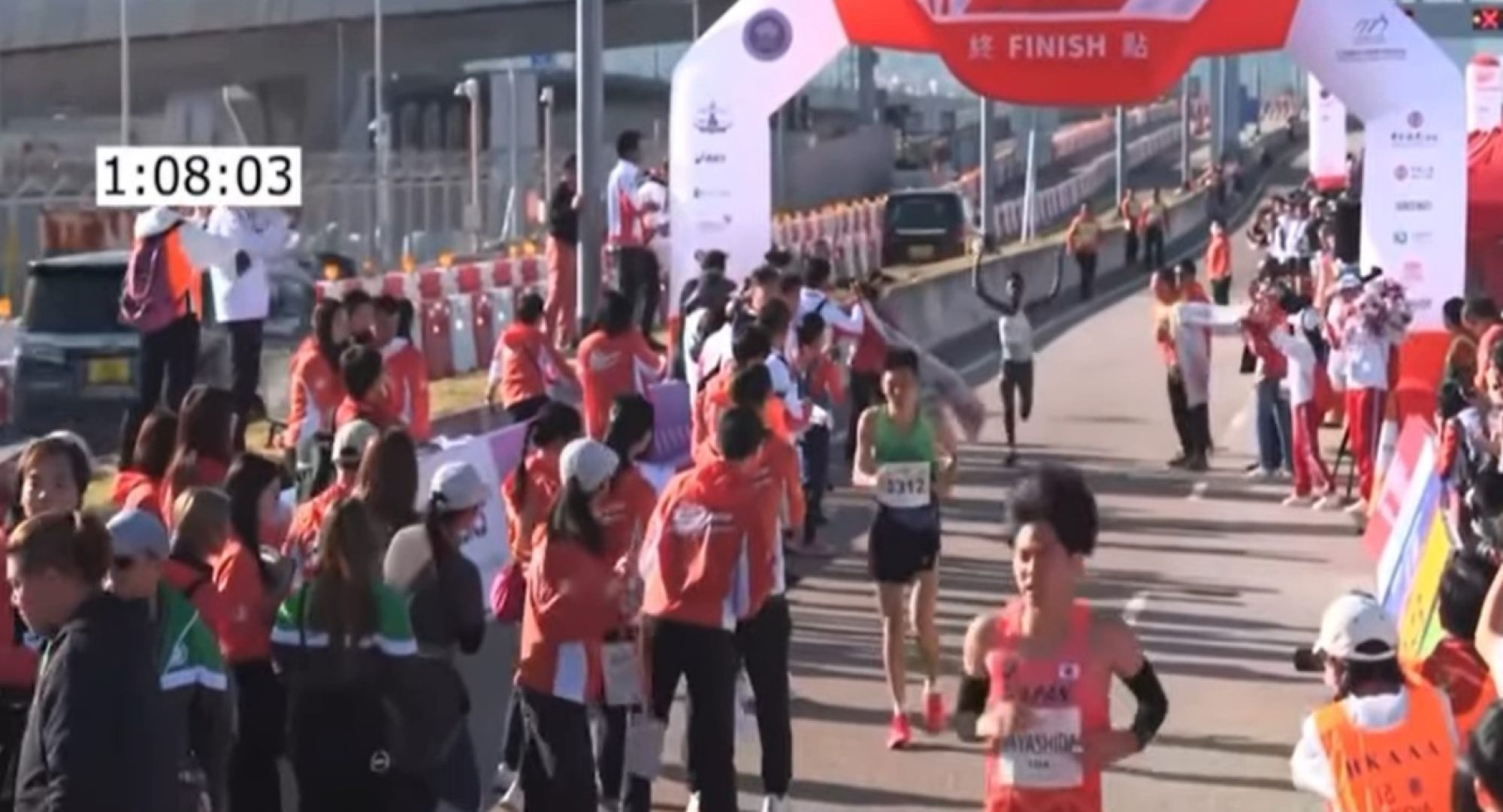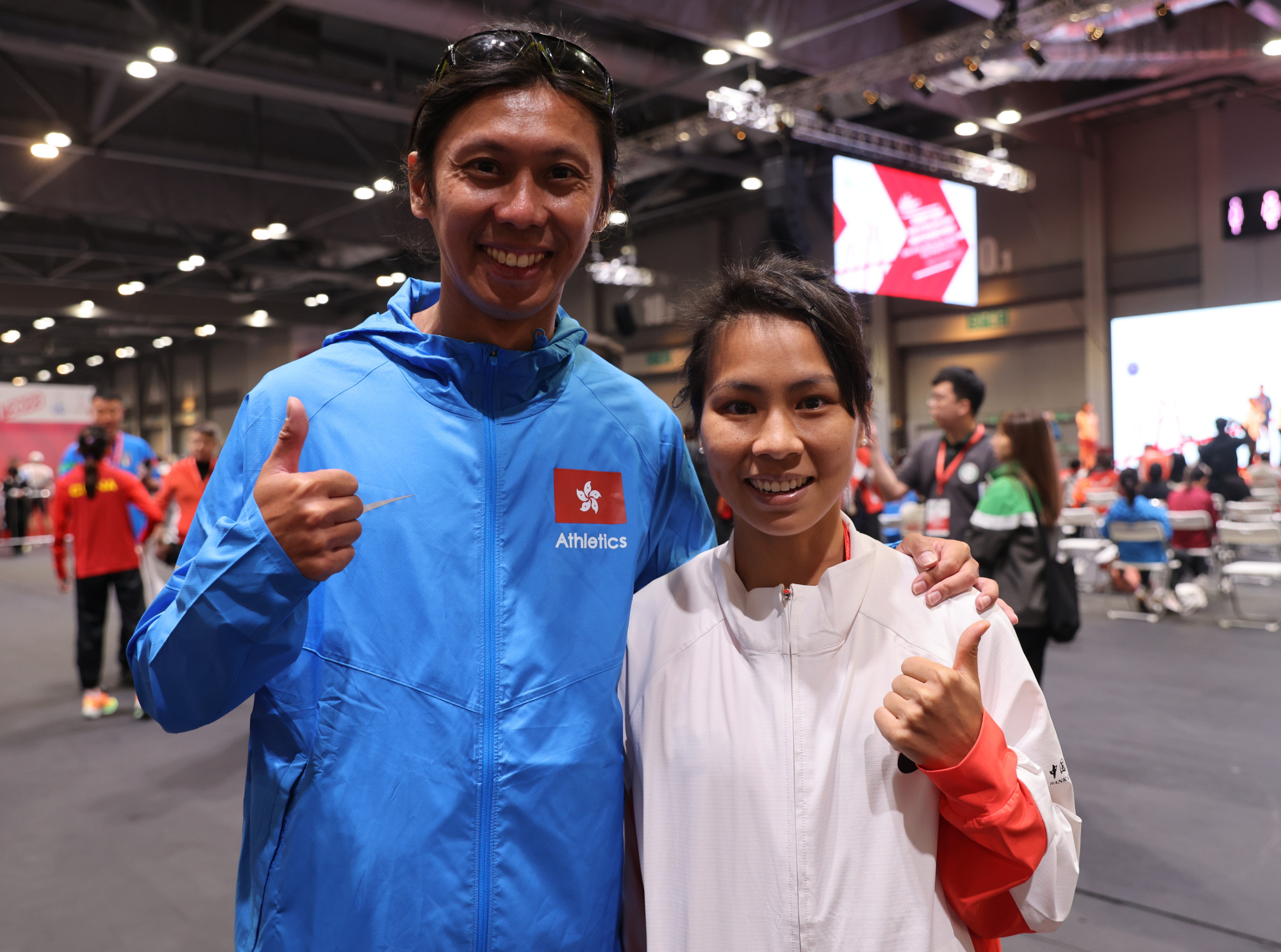
Hong Kong bridge half marathon chiefs blame location for food, toilet, bus issues and apologise for finish-tape blunder
- No food, not enough drinks, long queues and scarce toilets among the complaints from runners after officials’ initial claim of ‘perfect execution’
- HKAAA offers ‘sincere apologies’ for finish line error and says some issues arose from the narrow area of bridge used and the need to hand it back quickly
Organisers of the Bank of China Hong Kong-Zhuhai-Macau Bridge Half Marathon have apologised for a blunder at the finish line on Sunday, and attributed other problems emerging over its staging to the location and police requirements.
The Hong Kong Association of Athletics Affiliates (HKAAA) acknowledged that “officials mistakenly retrieved the finish tape” intended for women’s winner Sarah Chelangat from Uganda and “accidentally allowed” men’s runners to break it first.
“The male runner, representing Japan, somehow crossed the line some five seconds ahead of the women’s overall champion,” it said of an incident ridiculed on social media, expressing “sincere apologies to the affected athletes”.
Kwan Kee, the HKAAA chairman, said limited space on the bridge “raised difficulties”.

Organising committee chairman Simon Yeung Sai-mo had on Sunday touted the event’s “perfect execution” and awarded officials “100 marks”.
But frustrations vented by some of the 8,000 participants included a lack of food anywhere during and after the event, a shortage of water and absence of sports drinks, and delays in the bus service ferrying them to and from the bridge.
The race was held in a restricted zone next to the city’s airport, inside a border checkpoint at the Hong Kong end of the bridge link to mainland China and Macau.

That necessitated security checks at AsiaWorld-Expo for runners, who were told to reach the venue 70 to 120 minutes before their allotted race time. After lengthy queues for buses, runners complained at having to walk about a mile to the start, with one block of 14 toilets en route and no drinking water.
“I don’t think it’s a long distance,” Yeung said, adding that the drop-off point was the only spot to park buses.
Yeung said the restricted area required a police escort, but promised to discuss improvements to speed up the journey. A Facebook user claiming to be one of the bus drivers said escorts were poorly coordinated and drivers, too, were unable to eat.
“We were required [by the police] to hand over the bridge as early as possible, so the more facilities – temporary toilets or bananas – provided delayed the bridge reopening,” Yeung said.
Yeung was asked about the runners – who paid HK$550 (US$71) each to enter – being unable to eat until about two hours after a gruelling 21km (13.1-mile) race, with finisher packs containing nothing edible, counter to common practice. A social media post showed staff pouring water into runners’ hands.

He insisted some past HKAAA races took place without food, said “an experienced runner usually brings their own” and claimed “a lot of runners threw away bananas” at the Hong Kong Marathon, causing “food-wasting” criticism by environmentalists.
Yeung suggested using shops and eateries at AsiaWorld-Expo. A delay in buses arriving, then queues of up to 50 minutes to retrieve belongings from the baggage store, held up access to those outlets, some of which were closed.
Other runners experienced bottle necks on the course and wide gutter grates that posed an injury risk, or heard their timing chips had not worked after they were excluded from the results.

 - Mike Chan.jpeg?itok=EQbwYm3R&v=1669714688)
